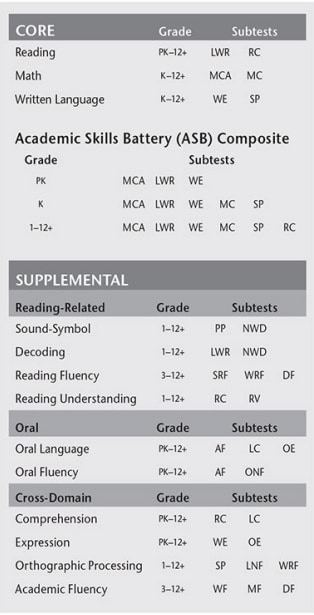Kaufman Test of Educational Achievement, Third Edition
KTEA-3- Individually administered battery that provides in-depth assessment of key academic skills. Guidance on using this test on telehealth.
KTEA-3 Dyslexia Index Scoring Manual
A103000242225 Qualification Level BOrdering
Overview
- Publication date:
- 2014
- Completion time:
- 15 to 80 minutes
- Administration:
- Individual; Individual; Q-interactive® administration and scoring, Q-global® scoring and reporting, or manual scoring
- Age range:
- 4 years – 25 years 11 months
- Qualification level:
- B
Product Details
|
Empower all your students to succeed and receive a deeper understanding of achievement gaps with the new KTEA-3. This comprehensive assessment of key academic skills maintains all the important features of the KTEA-II and offers a wealth of exciting updates for targeted interventions. Users & ApplicationsSpecial education teachers, school psychologists, educational diagnosticians, and other professionals use this tool to help:
Content & AdministrationSubtests
Composite Structure
Features & Benefits
Psychometric Information
Scoring & Reporting
Two options for scoring and reporting the KTEA-3 are now available on Q-global. The first option is to pay per-report. Customers who administer the KTEA-3 only a few times each year, or those who want the flexibility to pay only as the assessment is used, may prefer this option. The second option is to select an “unlimited use” subscription, where one user of the KTEA-3 gets unlimited scoring and reporting for one year, three years, or five years. This may be a better option for customers who administer the KTEA-3 several times each year—and don’t want to worry about keeping track of their report expenses. Q-global reports provide:
|



